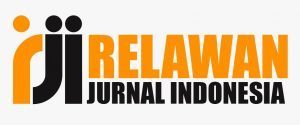DATA MINING DALAM PREDIKSI JUMLAH PASIEN DENGAN REGRESI LINEAR DAN EXPONENTIAL SMOOTHING
Abstract
Keywords
Full Text:
PDF (1-8)References
Al-Khowarizmi et. al, “Sensitivity of MAPE using detection rate for big data forecasting crude palm oil on k-nearest neighbor”, International Journal of Electrical and Computer Engineering, Vol. 11, No. 3, 2021. https://ijece.iaescore.com/index.php/IJECE/article/view/23975/14861
Andini et. al, “Sistem Peramalan Jumlah Penumpang Kapal Laut Di Pelabuhan Tanjung Perak Surabaya Menggunakan Triple Eksponensial Smoothing Berbasis Android”, Positif : Jurnal Sistem dan Teknologi Informasi, Volume 4 No. 2, 2018. https://ejurnal.poliban.ac.id/index.php/Positif/article/view/582/585
Aprilia, “Penerapan Metode Forecast Exponential Smoothing pada Jumlah Pasien Puskesmas”, Jurnal Biometrika dan Kependudukan, Vol. 5, No. 2 Desember, 2016. https://e-journal.unair.ac.id/JBK/article/view/5834/3740
Attanayake et. al, “Combining Forecast of Arima and Exponential Smoothing Models”, Advances and Applications in Statistics, Volume 59, Number 2, 2019. http://dx.doi.org/10.17654/AS059020199
Boldina, I., Beninger, P., “Strengthening statistical usage in marine ecology: Linear regression”, Journal of Experimental Marine Biology and Ecology, 2016. https://www.sciencedirect.com/science/article/abs/pii/S002209811530023X
Chen et. al, “Application of a PCA-ANN Based Cost Prediction Model for General Aviation Aircraft”, IEEE Access, Vol 8, 2020. https://www.researchgate.net/publication/342859911_Application_of_a_PCA-ANN_Based_Cost_Prediction_Model_for_General_Aviation_Aircraft
Gupta, “A Regression Modeling Technique on Data Mining”, International Journal of Computer Applications, Volume 116 – No. 9, April, 2015. https://research.ijcaonline.org/volume116/number9/pxc3902570.pdf
Gurgen et. al, “Prediction of the colorimetric parameters and mass loss of heat-treated bamboo: Comparison of multiple linear regression and artificial neural network method”, COLOR Research And Application, Volume 44 Issue 5, 2019. https://onlinelibrary.wiley.com/doi/10.1002/col.22393
Gustriansyah et. al, “Single exponential smoothing method to predict sales multiple products”, 1st International Conference on Advance and Scientific Innovation, Series 1175, 2019. https://iopscience.iop.org/article/10.1088/1742-6596/1175/1/012036/pdf
Lalis, J., “A New Multiclass Classification Method for Objects with Geometric Attributes Using Simple Linear Regression”, IAENG International Journal of Computer Science, 43:2, 2016. http://www.iaeng.org/IJCS/issues_v43/issue_2/IJCS_43_2_08.pdf
Maulud et. al, “A Review on Linear Regression Comprehensive in Machine Learning”, Journal of Applied Science and Technology Trends, Vol. 01, 2020. https://jastt.org/index.php/jasttpath/article/view/57/20
Oni et, al, “Comparison of Exponential Smoothing Models for Forecasting Cassava Production”, International Journal of Scientific Research in Mathematical and Statistical Sciences, Volume 5 Issue 3, 2018. https://pdfs.semanticscholar.org/34f4/07cd5bb0d92224e5e9313c51dab0d915c325.pdf
Permai et. al, “Linear regression model using bayesian approach for energy performance of residential building”, Procedia Computer Science 135, 2018. https://reader.elsevier.com/reader/sd/pii/S1877050918315126?token=95D738E09950434D46AFA8E01625A8433D2D9EB81D3763C81B76CCA1DE6F43F1DAAA1700FBC935D01FDC096AABB13CAE&originRegion=eu-west-1&originCreation=20221017035453
Piekutowska et. al, “The Application of Multiple Linear Regression and Artificial Neural Network Models for Yield Prediction of Very Early Potato Cultivars before Harvest”, Agronomy, 11 885, 2021. https://doi.org/10.3390/agronomy11050885
Qiao et. al, “Generation and Prediction of Construction and Demolition Waste Using Exponential Smoothing Method: A Case Study of Shandong Province, China”, Sustainability Journal 12, 5094, 2020. https://www.mdpi.com/2071-1050/12/12/5094/htm
Samuel et. al, “A Comparative Study of Regression Analysis and Artificial Neural Network Methods for Medium-Term Load Forecasting”, Indian Journal of Science and Technology, Vol 10 (10), 2017. https://dx.doi.org/10.17485/ijst/2017/v10i10/86243
Suh et. al, “A Brief Review of a Machine Learning Programming of Simple Linear Regression”, Proceedings of the KNS 2018 Fall Meeting, (p. v). Korea, Republic of: KNS.
Vivas et. al, “A Systematic Review of Statistical and Machine Learning Methods for Electrical Power Forecasting with Reported MAPE Score”, Entropy, 22, 1412, 2020. https://www.mdpi.com/1099-4300/22/12/1412/htm
Wibowo, A. et. al, “Segmentasi Pelanggan Ritel Produk Farmasi Obat Menggunakan Metode Data Mining Klasterisasi Dengan Analisis Recency Frequency Monetary (RFM) Termodifikasi”, Jurnal Teknologi Informasi dan Ilmu Komputer (JTIIK), Vol. 7 No. 3, 2020. https://jtiik.ub.ac.id/index.php/jtiik/article/view/2925/pdf
Yonar et. al, “Modeling and Forecasting for the number of cases of the COVID-19 pandemic with the Curve Estimation Models, the Box-Jenkins and Exponential Smoothing Methods”, Eurasian Journal of Medicine and Oncology, DOI: 10.14744/ejmo.2020.28273, 2020. https://www.researchgate.net/publication/340686014_Modeling_and_Forecasting_for_the_number_of_cases_of_the_COVID-19_pandemic_with_the_Curve_Estimation_Models_the_Box-Jenkins_and_Exponential_Smoothing_Methods
DOI: https://doi.org/10.31326/sistek.v5i1.1421
Refbacks
- There are currently no refbacks.
JOURNAL IDENTITY
Journal Name: Journal Information System and Science Technology
Jurnal Sistem Informasi dan Sains Teknologi
e-ISSN: 2684-8260
Publisher: Program Studi Sistem Informasi, Universitas Trilogi, Jakarta Selatan, Indonesia
Publication Schedule: February and August
Language: Indonesian and English
APC: Free of charge (submission, publishing)
Indexing: Google Scholar, Garuda, Neliti, One Search, Base, DRJI, Road, Crossref, Index Copernicus, WorldCat, Scilit, Dimensions (find by DOI article)
OAI address: http://trilogi.ac.id/journal/ks/index.php/SISTEK/oai?verb=ListRecords&metadataPrefix=oai_dc
Collaboration Partners: Indonesian Association of Higher Education in Informatics and Computing (APTIKOM)
Contact: sistek@trilogi.ac.id (Whatsapp Number: +628192454119)
license :

This work is licensed under a Creative Commons Attribution 4.0 International License.
Journal Information System and Science Technology (Jurnal Sistem Informasi dan Sains Teknologi) is Published by Information System Department Trilogi University, South Jakarta, Indonesia.
Under license CC-BY from Creative Commons Attribution.
 Jurnal Sistem Informasi dan Sains Teknologi
Jurnal Sistem Informasi dan Sains Teknologi 




















